No matter who, what or where you are shooting, the way you compose a shot is important; a better composed shot of your buddy will look better than a poorly composed shot of Tom Wallisch. That being said, it is important to keep composition in mind with every shot. I do this in several ways, and of course, as in all of photography these are by no means ‘rules’ that are set in stone, nor is this a comprehensive list. Always experiment and push your own creative boundaries, just do it with intention and know why you are doing it.
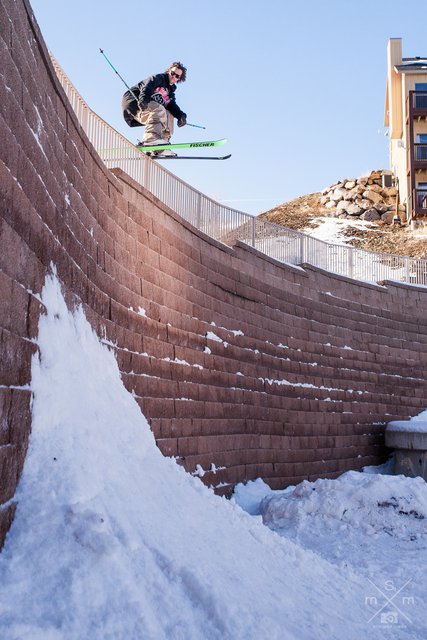
First, I try to familiarize myself with what I’m shooting, and look for the best backgrounds. Positioning the skier or the subject on a background that they will stand out against will really help to increase the visual impact and emphasis in the shot. There are several ways to isolate your subject from the background, including framing, depth of field and lighting.
Other good ways to get a clean background are through lens choice and changing the angle of the shot. Changing the angle you shoot from can be a simple way to get rid of distracting elements like tree and horizon lines. For example getting low with a wide angle lens often allows you to frame the rider against the sky. Likewise, you can try to get on the same level as the feature and shoot with a long lens in order to frame the skier against the snow.
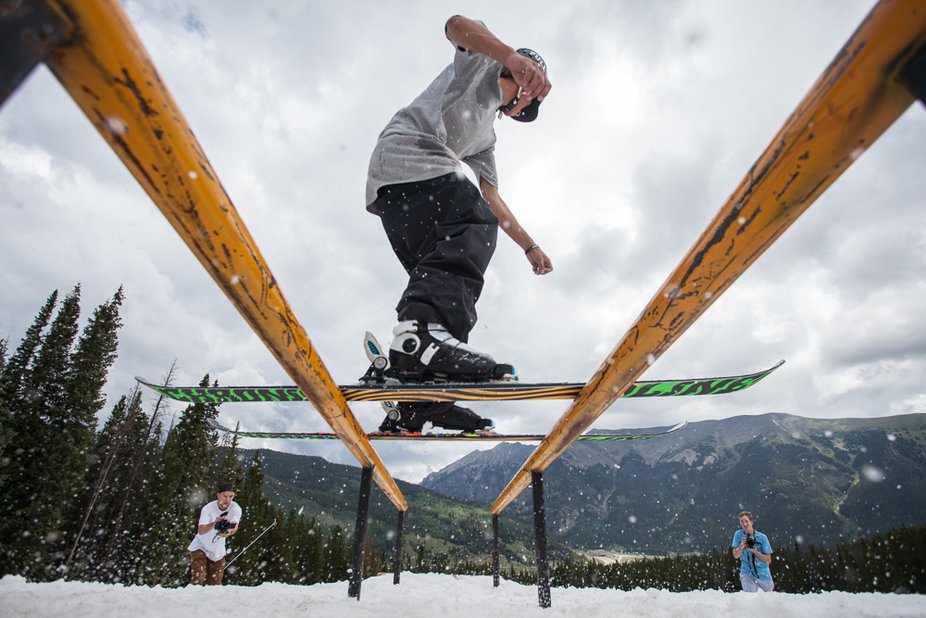
I would do this all the time when I shot at Woodward at Copper and Snoqualmie, where typical backgrounds were dark trees that skiers tend to blend into. Like here where I had to lay down on my belly to 1) get Dan framed against the sky, where he would stand out and 2) not get my head cut off.
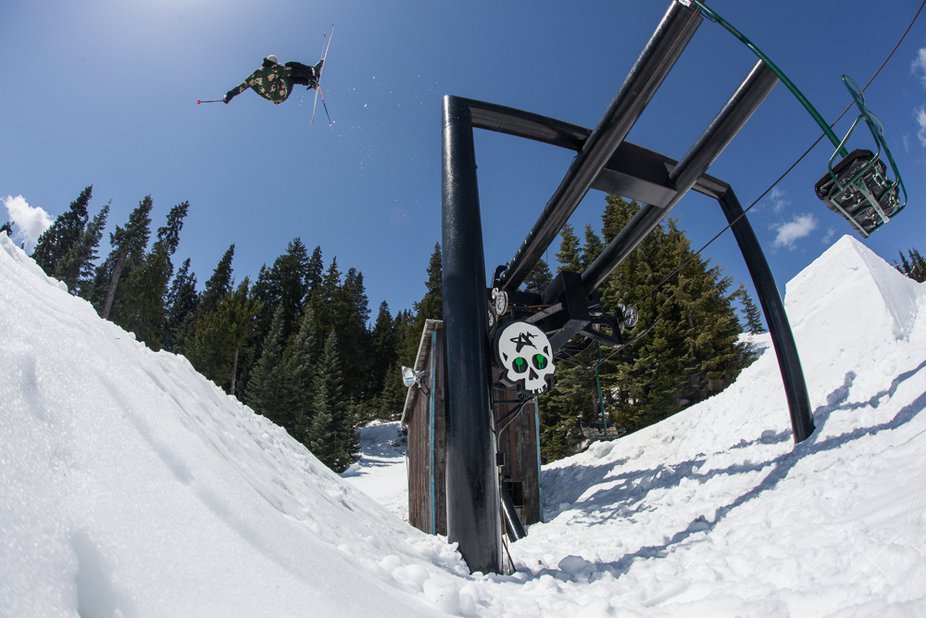
Here, the whole feature, while big and impressive, was surrounded by dark trees that skiers like Vinny would have blended right into (dark clothes are bad for us photogs!). So, I decided to get as close as I could and shoot wide, that way he would be against the sky rather than the trees.
Next, make sure to keep context in your shots. Skiing and action sports aren’t like football or basketball where the athletes are in a confined and familiar setting, every jump or rail is different. This means that it is important to show the whole story of the action you are portraying. I use three simple questions to do this; where is the skier coming from? What are they doing? And where are they going?
In practice, this means showing the takeoff, the action and the landing all in the frame. Cutting off any of the three can confuse the viewer and leave them wanting more. To avoid this avoid (in general) cutting off parts of the rail, leaving out the landing or jump and ‘guy in the sky’ shots.
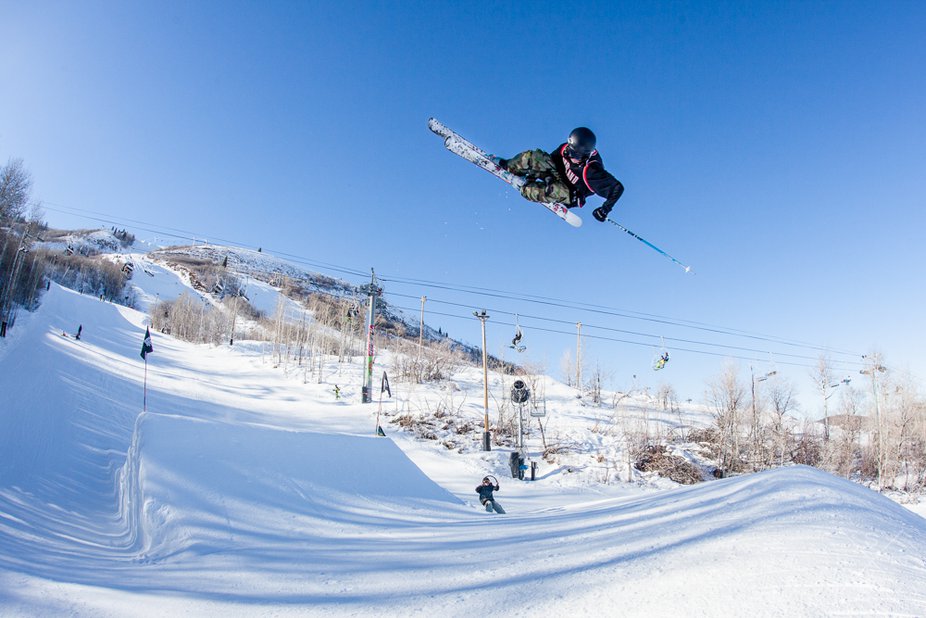
While shooting from the knuckle is kind of cliché, it is a good way to keep context and show the scale of the trick and the jump.
Finally, fill the frame with the action. To use one of the most played out and cliché photography quotes ever, “If your photos aren’t good enough, you’re not close enough.” To me, this doesn’t mean always shoot fish as close to the subject as possible (although I do love to do that), but to fill the frame. By filling the frame, I mean ridding the distraction and the dead space and shooting tight. But not too tight, don’t forget context! Shooting too wide or loose creates dead space, which is uninteresting and detracts from the shot.
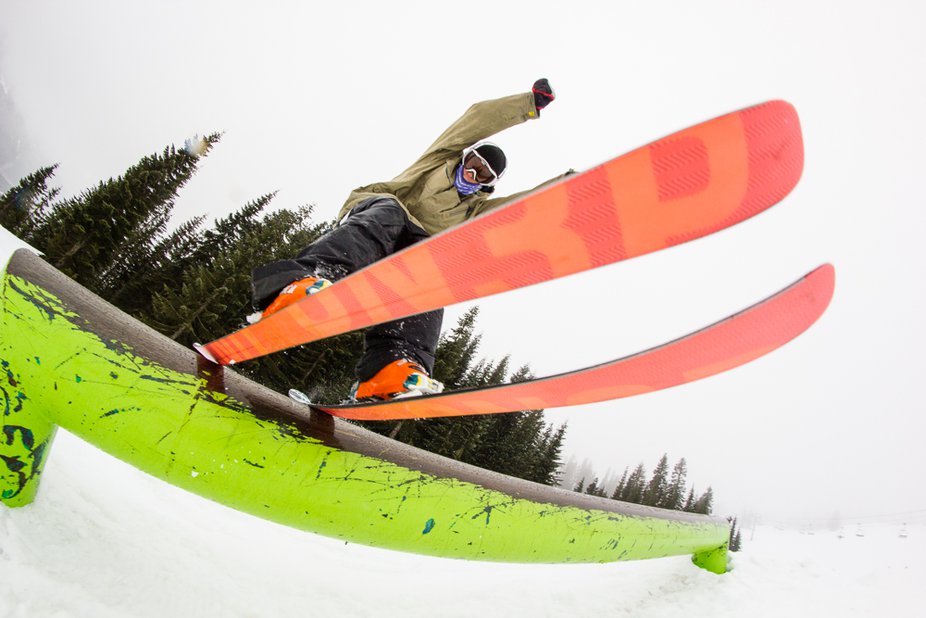
While I did lose part of the rail, I really wanted to get as close as I could on this one for a couple reasons. 1) It's a pretty standard tube, so I wanted the action to dominate 2) The weather and backgrounds sucked and 3) I wanted to highlight the trick
These are just a couple basic ways to think about composing photos, with one theme throughout, think about what you’re doing and why. To me, the point of my photography is to present a moment in the best possible way, and keeping these things and other in mind helps me do that.


Comments